#Agriculture
Text
Latin Literature Tournament - Round 1


Propaganda under the cut!
Tacitus Propaganda:
Balances really grand and expressive tone with a really concise and truncated style, which makes for some really dynamic passages
Reading Tacitus lowkey feels like watching a really good prestige period drama
One of my colleagues used to call Tacitus "Daddy." I didn't really get it, and then I saw this statue. And you know what? Yeah. Daddy.
Cato Propaganda:
Wrote extensively on how to make better wine, helping keep Rome stocked with the good stuff for centuries
He's got a piece of the fucking moon named after him, guys. The moon.
Moreover, Carthage must be destroyed
#tagamemnon#tacitus#cato#cato the elder#latin#latin literature#latin literature tournament#tournament polls#tumblr polls#bracket#history#agriculture#wine#rhetoric#carthage
18 notes
·
View notes
Text

125K notes
·
View notes
Text
I will write this thought about Veganism and Classism in the USA in another post so as to not derail the other thread:
There are comments in the notes that say meat is only cheaper than plant based foods because of subsidies artificially lowering the price of meat in the United States. This is...part of the story but not all of it.
For my animal agriculture lab we went to a butcher shop and watched the butcher cut up a pig into various cuts of meat. I have had to study quite a bit about the meat industry in that class. This has been the first time I fully realized how strongly the meat on a single animal is divided up by socioeconomic class.
Like yes, meat cumulatively takes more natural resources to create and thus should be more expensive, but once that animal is cut apart, it is divided up between rich and poor based on how good to eat the parts are. I was really shocked at watching this process and seeing just how clean and crisp an indicator of class this is.
Specifically, the types of meat I'm most familiar with are traditionally "waste" parts left over once the desirable parts are gone. For example, beef brisket is the dangly, floppy bit on the front of a cow's neck. Pork spareribs are the part of the ribcage that's barely got anything on it.
And that stuff is a tier above the "meat" that is most of what poor people eat: sausage, hot dogs, bologna, other heavily processed meat products that are essentially made up of all the scraps from the carcass that can't go into the "cuts" of meat. Where my mom comes from in North Carolina, you can buy "livermush" which is a processed meat product made up of a mixture of liver and a bunch of random body parts ground up and congealed together. There's also "head cheese" (made of parts of the pig's head) and pickled pigs' feet and chitlin's (that's made of intestines iirc) and cracklin's (basically crispy fried pig skin) and probably a bunch of stuff i'm forgetting. A lot of traditional Southern cooking uses basically scraps of animal ingredients to stretch across multiple meals, like putting pork fat in beans or saving bacon grease for gravy or the like.
So another dysfunctional thing about our food system, is that instead of people of each socioeconomic class eating a certain number of animals, every individual animal is basically divided up along class lines, with the poorest people eating the scraps no one else will eat (oftentimes heavily processed in a way that makes it incredibly unhealthy).
Even the 70% lean ground beef is made by injecting extra leftover fat back into the ground-up meat because the extra fat is undesirable on the "better" cuts. (Gross!)
I've made, or eaten, many a recipe where the only thing that makes it non-vegan is the chicken broth. Chicken broth, just leftover chicken bones and cartilage rendered and boiled down in water? How much is that "driving demand" for meat, when it's basically a byproduct?
That class really made me twist my brain around about the idea of abstaining from animal products as a way to deprive the industry of profits. Nobody eats "X number of cows, pigs, chickens in a lifetime" because depending on the socioeconomic class, they're eating different parts of the animal, splitting it with someone richer or poorer than they are. If a bunch of people who only ate processed meats anyway abstained, that wouldn't equal "saving" X number of animals, it would just mean the scraps and byproducts from a bunch of people's steaks or pork chops would have something different happen to them.
The other major relevant conclusion I got from that class, was that animal agriculture is so dominant because of monoculture. People think it's animal agriculture vs. plant agriculture (or plants used for human consumption vs. using them to feed livestock), but from capitalism's point of view, feeding animals corn is just another way to use corn to generate profits.
People think we could feed the world by using the grain fed to animals to feed humans, but...the grain fed to animals, is not actually a viable diet for the human population, because it's literally just corn and soybean. Like animal agriculture is used to give some semblance of variety to the consumer's diet in a system that is almost totally dominated by like 3 monocrops.
Do y'all have any idea how much of the American diet is just corn?!?! Corn starch, corn syrup, corn this, corn that, processed into the appearance of variety. And chickens and pigs are just another way to process corn. That's basically why we have them, because they can eat our corn. It's a total disaster.
And it's even worse because almost all the USA's plant foods that aren't the giant industrial monocrops maintained by pesticides and machines, are harvested and cared for by undocumented migrant workers that get abused and mistreated and can't say anything because their boss will tattle on them to ICE.
8K notes
·
View notes
Text
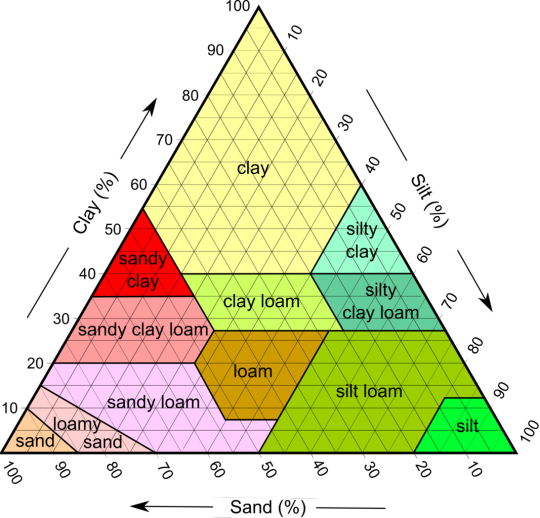
#i just kinda want to see what happens#kets kerfuffle#soil#dirt#farming#geology#agriculture#rocks#science
28K notes
·
View notes
Text

2K notes
·
View notes
Note
hey, how do you cope with people saying we only have a small amount of time left to stop the worst effects of climate change? no matter how hopeful and ok i am, that always sends me back into a spiral :(
A few different ways
1. The biggest one is that I do math. Because renewable energy is growing exponentially
Up until basically 2021 to now, all of the climate change models were based on the idea that our ability to handle climate change will grow linearly. But that's wrong: it's growing exponentially, most of all in the green energy sector. And we're finally starting to see proof of this - and that it's going to keep going.
And many types of climate change mitigation serve as multipliers for other types. Like building a big combo in a video game.
Change has been rapidly accelerating and I genuinely believe that it's going to happen much faster than anyone is currently predicting
2. A lot of the most exciting and groundbreaking things happening around climate change are happening in developing nations, so they're not on most people's radars.
But they will expand, as developing nations are widely undergoing a massive boom in infrastructure, development, and quality of life - and as they collaborate and communicate with each other in doing so
3. Every country, state, city, province, town, nonprofit, community, and movement is basically its own test case
We're going to figure out the best ways to handle things in a remarkably quick amount of time, because everyone is trying out solutions at once. Instead of doing 100 different studies on solutions in order, we get try out 100 (more like 10,000) different versions of different solutions simultaneously, and then figure out which ones worked best and why. The spread of solutions becomes infinitely faster, especially as more and more of the world gets access to the internet and other key infrastructure
4. There's a very real chance that many of the impacts of climate change will be reversible
Yeah, you read that right.
Will it take a while? Yes. But we're mostly talking a few decades to a few centuries, which is NOTHING in geological history terms.
We have more proof than ever of just how resilient nature is. Major rivers are being restored from dried up or dead to thriving ecosystems in under a decade. Life bounces back so fast when we let it.
I know there's a lot of skepticism about carbon capture and carbon removal. That's reasonable, some of those projects are definitely bs (mostly the ones run by gas companies, involving carbon credits, and/or trying to pump CO2 thousands of feet underground)
But there's very real potential for carbon removal through restoring ecosystems and regenerative agriculture
The research into carbon removal has also just exploded in the past three years, so there are almost certainly more and better technologies to come
There's also some promising developments in industrial carbon removal, especially this process of harvesting atmospheric CO2 and other air pollution to make baking soda and other industrially useful chemicals
As we take carbon out of the air in larger amounts, less heat will be trapped in the atmosphere
If less heat is trapped in the atmosphere, then the planet will start to cool down
If the planet starts to cool down, a lot of things will stabilize again. And they'll probably start to stabilize pretty quickly
#Anonymous#ask#me#carbon removal#carbon sequestration#carbon emissions#air pollution#forests#afforestation#wetlands#regenerative farming#regenerative agriculture#agriculture#renewable energy#renewable electricity#solar power#wind power#climate change#climate anxiety#climate resilience#good news#hope#hope posting
5K notes
·
View notes
Text
Méthode de nouage de corde utilisé en agriculture afin d'éviter toutes blessures aux végétaux
1K notes
·
View notes
Text

Source

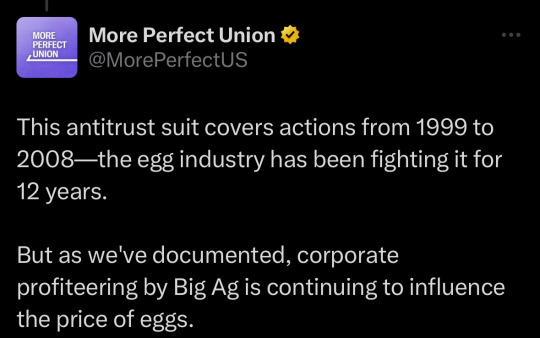


Source
1K notes
·
View notes
Text
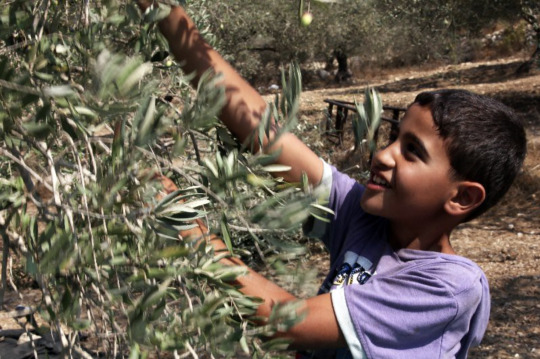
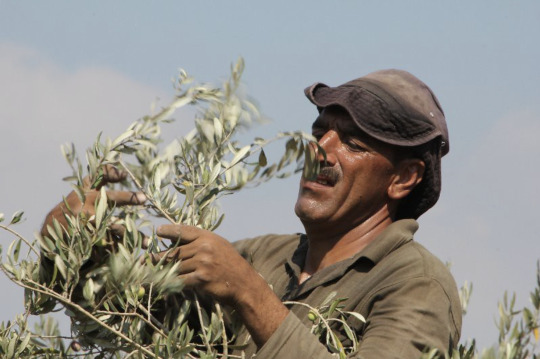
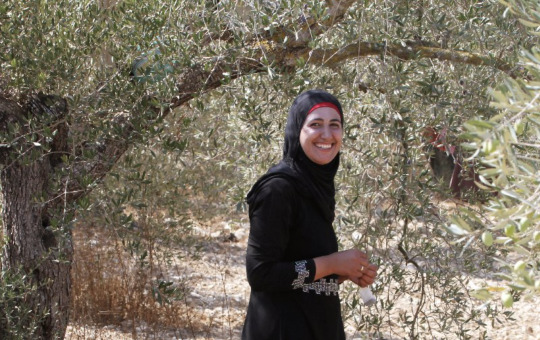
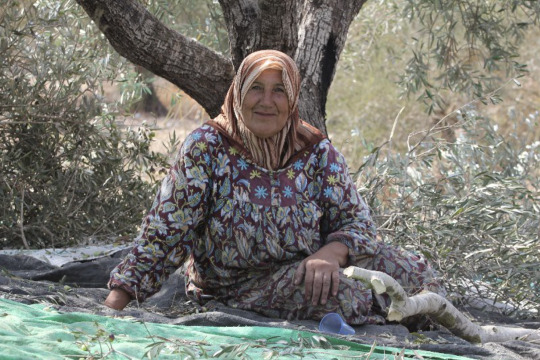
palestine, 2012
#free palestine#palestine#olive harvest#olive groves#trees#agriculture#pruning#flickr#oldweb#old web#2012
953 notes
·
View notes
Text
Making Desert Land Fertile with Water Bunds

#permaculture#regenerative ag#regenerative agriculture#agriculture#farming#gardening#how to make soil more fertile#how to turn a desert into fertile land#soil#soil fertility#organic farming#organic gardening#water harvesting
2K notes
·
View notes
Text
Every once in a while I’ll see some posts about everyone should become vegan in order to help the environment. And that… sounds kinda rude. I’m sure they don’t mean to come off that way but like, humans are omnivores. Yes there are people who won’t have any animal products be it meat or otherwise either due to personal beliefs or because their body physically cannot handle it, and that’s okay! You don’t have to change your diet to include those products if you don’t want to or you physically can’t.
But there’s indigenous communities that hunt and farm animals sustainably and have been doing so for generations. And these animals are a primary source of food for them. Look to the bison of North America. The settlers nearly caused an extinction as a part of a genocide. Because once the Bison were gone it caused an even sharper decline of the indigenous population. Now thankfully Bison did not go extinct and are actively being shared with other groups across America.
Now if we look outside of indigenous communities we have people who are doing sustainable farming as well as hunting. We have hunting seasons for a reason, mostly because we killed a lot of the predators. As any hunter and they will tell you how bad the deer population can get. (Also America has this whole thing about bird feathers and bird hunting, like it was bad until they laid down some laws. People went absolutely nuts on having feathers be a part of fashion like holy cow.)
We’re slowly getting better with having gardens and vertical farms within cities, and there’s some laws on being able to have a chicken or two at your house or what-have-you in the city for some eggs. (Or maybe some quails since they’re smaller than chickens it’s something that you’d might have to check in your area.) Maybe you would be able to raise some honey bees or rent them out because each honey tastes different from different plants. But ultimately when it comes to meat or cheese? Go to your local farmers. Go to farmers markets, meet with the people there, become friends, go actively check out their farm. See how the animal lives are and if the farmer is willing, talk to them about sustainable agriculture. See what they can change if they’re willing. Support indigenous communities and buy their food and products, especially if you’re close enough that the food won’t spoil on its way to you. (Like imagine living in Texas and you want whale meat from Alaska and you buy it from an indigenous community. I would imagine that would be pretty hard to get.)
Either way everything dies in the end. Do we shame scavengers for eating corpses they found before it could rot and spread disease? Do we shame the animals that hunt other animals to survive? Yes factory farming should no longer exist. So let’s give the animals the best life we can give them. If there’s babies born that the farmer doesn’t want, give them away to someone who wants them as a pet. Or someone who wants to raise them for something else. Not everyone can raise animals for their meat. I know I can’t I would get to emotionally attached. I’d only be able to raise them for their eggs and milk.
Yeah this was pretty much thrown together, and I just wanted to say my thoughts and throw them into the void. If you have some examples of sustainable farming/agriculture, please share them because while I got some stuff I posted from YouTube, I’m still interested to see what stuff I might’ve missed!
#solarpunk#farming#hunting#agriculture#sustainability#sustainable farming#sustainable agriculture#like Rewilding farm land is pretty interesting and trying to replicate an ecosystem with farm animals but also allowing wild animals#to make homes in the rewild farm land is pretty cool#and I have an absolute love for food/garden forests#and hydroponics have shown to be really great for communities in the winter time and they want to have fresh produce#all sorts of cool stuff
843 notes
·
View notes
Text
Hubert Reeves once wrote that "on the cosmic scale, liquid water is rarer than gold". And what is true for the universe is even truer in the Sahel, the name given to the vast, arid belt that skirts the Sahara and stretches across Africa from east to west.
Since 3,000 BCE, the peoples of this region have invested tremendous effort into coming up with myriad ways to capture and control this remarkably scarce resource. Faced with the poor distribution of water across space and time, they have had to resort to intelligent, thrifty methods to make the most of even the tiniest drop.
Overlooked for many years, the secrets of the Sahelian landscape are starting to pique the interest of researchers and decision-makers.
Continue Reading.
805 notes
·
View notes
Text
Researching herbicide resistance in weeds.
A decade ago, everyone said rotating applications of different herbicides was key to stopping herbicide resistance.
Then, around 2015, evidence from a large study emerged saying that this actually causes weeds to be MORE resistant, so the best thing to do is to spray a combination of multiple herbicides mixed together at once.
Now that is being called into question too. Whoda thunk it...
Herbicide resistance among weeds is only getting stronger. Recently, scientists found an annual bluegrass (Poa annua) on a golf course that was resistant to seven herbicide modes of action at once. Seven. SEVEN. Amaranth plants been found with resistance to six herbicide modes of action at once. Twenty years ago, the narrative was that resistance to glyphosate (Roundup) was unlikely to become widespread; today it's the second-most common type of resistance.
What's more, plants are developing types of herbicide resistance that are effective against multiple herbicides at once and harder to detect. Instead of changing the chemical processes within them that are affected by the herbicides so the herbicides don't work as well, they're changing the way they absorb chemicals in the first place. Resistant plants are producing enzymes that detoxify the herbicides before they even enter the plants' cells.
It took Monsanto ten years to develop crop varieties resistant to Dicamba (after weeds made 'Roundup Ready' crops pointless). Palmer amaranth evolved Dicamba resistance in five years.
So I asked, "Why are all the proposed solutions dependent on using more herbicides, when we know damn well that this is going to do nothing but make the weeds evolve faster?"
The answer is that chemical companies have the world in a death grip. They can't make money off non-chemical solutions, so chemical solutions get all the funding, research, and outreach to farmers.
But why do chemical companies have so much power?
One of the biggest reasons is the U.S. military.
In the Vietnam war, all of Vietnam was sprayed with toxic herbicides like Agent Orange, which was incredibly toxic to humans and affected the Vietnamese population with horrible illnesses and birth defects. Monsanto, the company that made the herbicides, knew that it did this, but didn't tell anyone. The US government didn't admit that they'd poisoned humans on a mass scale until Vietnam veterans started dying and coming down with horrible illnesses, and even then, it took them 40 years. (My Papaw died at 60 because of that stuff.) And the soldiers weren't there for very long. As for the Vietnamese people, the soil and water where they live is contaminated.
Similarly, during the "war on drugs," the US military sprayed Roundup and other chemicals on fields to destroy coca plants and other plants used in the manufacturing of drugs. This killed a lot of crops that farmers needed to live, and caused major health problems in places such as Columbia. The US government said that people getting sick were lying and that Roundup was just as safe as table salt. (A statement that did not age well.)
So chemical companies make money off arming the USA military. The American lawn care industry, and the agricultural system, therefore originates in more than one way from the United States's war-mongering.
The other major way is described in this article (which I highly recommend), which describes how after WW2, chemical plants used for manufacturing explosives were changed into fertilizer producing plants, but chemical companies couldn't market all that fertilizer to farmers, so they invented the lawn care industry. No exaggeration, that's literally what happened.
This really changes my perspective on all the writings about fixing the agricultural system. The resources are biased towards the use of chemicals in agriculture because the companies are so powerful as to make outreach and research for non-chemical methods of agriculture really hard to fund. All the funding is in finding new ways to spray chemicals or spraying slightly different chemicals, because that's what you can actually get ahold of money to look into. It is like the research has to negotiate a truce with the chemical companies, suggesting only solutions that won't cause lower profits.
Meanwhile my respect for Amaranth is skyrocketing.
Who would win: The USA military-industrial complex or one leafy boi
4K notes
·
View notes
Text
what do you mean 44% of American Corn goes to fuel ethanol. Barbaric. What the hell.

Agricultural policy... is not very good! And I know that already but it's somehow even more ridiculous than my intuition. Basically all increases in corn production since 1980 have gone into fuel ethanol. Just don't use that land! It's free carbon sequestration!
#i refuse to use the word biofuel it makes people think it's good#ecology#agriculture#realized i wasn't subscribed to Hannah Richie's substack the other day
849 notes
·
View notes
Text
In just one month, approximately 462 hectares (4.6 million m²) of woodland, "notably pines and oaks, as well as around 20 hectares of centuries-old olive groves," have been destroyed by Israeli airstrikes, said Georges Mitri, Director of the Land and Natural Resources Programme at Balamand University.
Since the escalation of tensions between Hezbollah and the Israeli army on Oct. 8, the latter has used white phosphorus to set fire to forests and fields in border areas. The 1980 Geneva Convention, which Israel has not signed, prohibits the use of white phosphorous on civilians and in civilian areas due to its devastating effects on humans, animals and the environment.
[...]
Amid the ongoing economic crisis, the attacks targeting olive groves ahead of harvest season have a major negative impact on the local economy in the area.
"Traditionally, people gather around the olive trees, harvest their crops, press their oil together... A big part of their lives is being lost," lamented Younes.
“The olive trees being burned are centuries old," he pointed out. “If we were to replant them today, how long would it be before these fields became productive?” Giving an estimate of the economic losses attributed to the daily fires in the South, Mitri put the figure at nearly 20 million dollars.
In the long term, Younes is particularly concerned about the environmental impact of the phosphorus bombs. "We have no choice but to wait until the end of hostilities before assessing the situation on the ground," he said. In Younes’ view, the greater the rate of absorption of phosphorus into the soil and water, the greater the risk of dramatic long-term consequences on Lebanon’s environment.
I'll add here that southern Lebanon has never fully recovered from 2006. There are still unexploded cluster bombs in the ground, killing and maiming people. There is still chemical contamination. The economic impact on agriculture has never been fully recouped. The cancer rates are still elevated and unaddressed. The labor structure and which crops are grown changed after 2006 and have never reverted. I remember weeping watching the bombing of Gaza in 2021 as I was in the middle of writing a paper about the long term legacies of the July War in Lebanon, with these additional long-term violences of the bombing at the forefront of my mind along with the immediate deaths and tragedies. This is a horrifying compounding of an existing injury, at a time when Lebanon is in economic free fall and (as the article also explains) in the middle of fire season, and with firefighters unable to do much because the area is. being bombed.
841 notes
·
View notes
Text
"Marginal improvements to agricultural soils around the world would store enough carbon to keep the world within 1.5C of global heating, new research suggests.
Farming techniques that improve long-term fertility and yields can also help to store more carbon in soils but are often ignored in favor of intensive techniques using large amounts of artificial fertilizer, much of it wasted, that can increase greenhouse gas emissions.
Using better farming techniques to store 1 percent more carbon in about half of the world’s agricultural soils would be enough to absorb about 31 gigatons of carbon dioxide a year, according to new data. That amount is not far off the 32 gigaton gap between current planned emissions reduction globally per year and the amount of carbon that must be cut by 2030 to stay within 1.5C.
The estimates were carried out by Jacqueline McGlade, the former chief scientist at the UN environment program and former executive director of the European Environment Agency. She found that storing more carbon in the top 30 centimeters of agricultural soils would be feasible in many regions where soils are currently degraded.
McGlade now leads a commercial organization that sells soil data to farmers. Downforce Technologies uses publicly available global data, satellite images, and lidar to assess in detail how much carbon is stored in soils, which can now be done down to the level of individual fields.
“Outside the farming sector, people do not understand how important soils are to the climate,” said McGlade. “Changing farming could make soils carbon negative, making them absorb carbon, and reducing the cost of farming.”
She said farmers could face a short-term cost while they changed their methods, away from the overuse of artificial fertilizer, but after a transition period of two to three years their yields would improve and their soils would be much healthier...
Arable farmers could sequester more carbon within their soils by changing their crop rotation, planting cover crops such as clover, or using direct drilling, which allows crops to be planted without the need for ploughing. Livestock farmers could improve their soils by growing more native grasses.
Hedgerows also help to sequester carbon in the soil, because they have large underground networks of mycorrhizal fungi and microbes that can extend meters into the field. Farmers have spent decades removing hedgerows to make intensive farming easier, but restoring them, and maintaining existing hedgerows, would improve biodiversity, reduce the erosion of topsoil, and help to stop harmful agricultural runoff, which is a key polluter of rivers."
-via The Grist, July 8, 2023
#agriculture#sustainable agriculture#sustainability#carbon emissions#carbon sequestration#livestock#farming#regenerative farming#native plants#ecosystems#global warming#climate change#good news#hope
4K notes
·
View notes